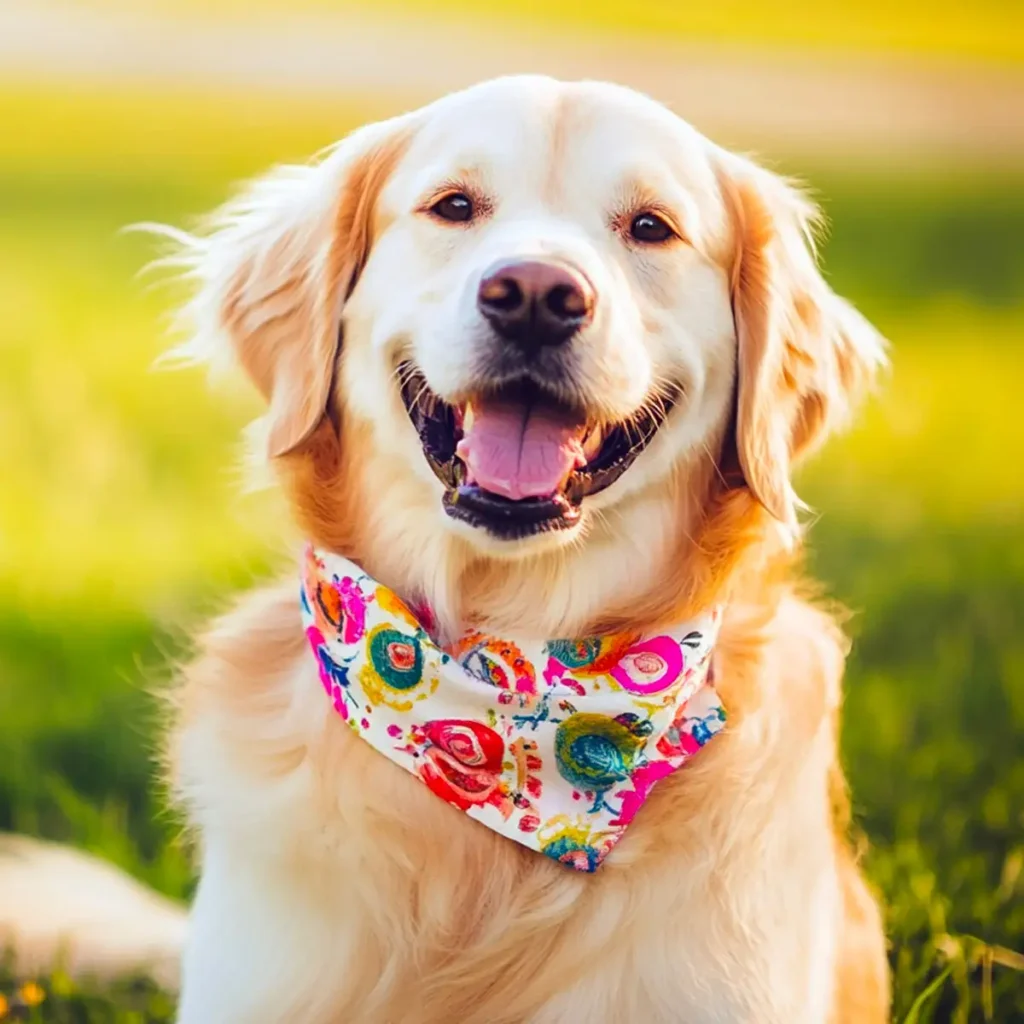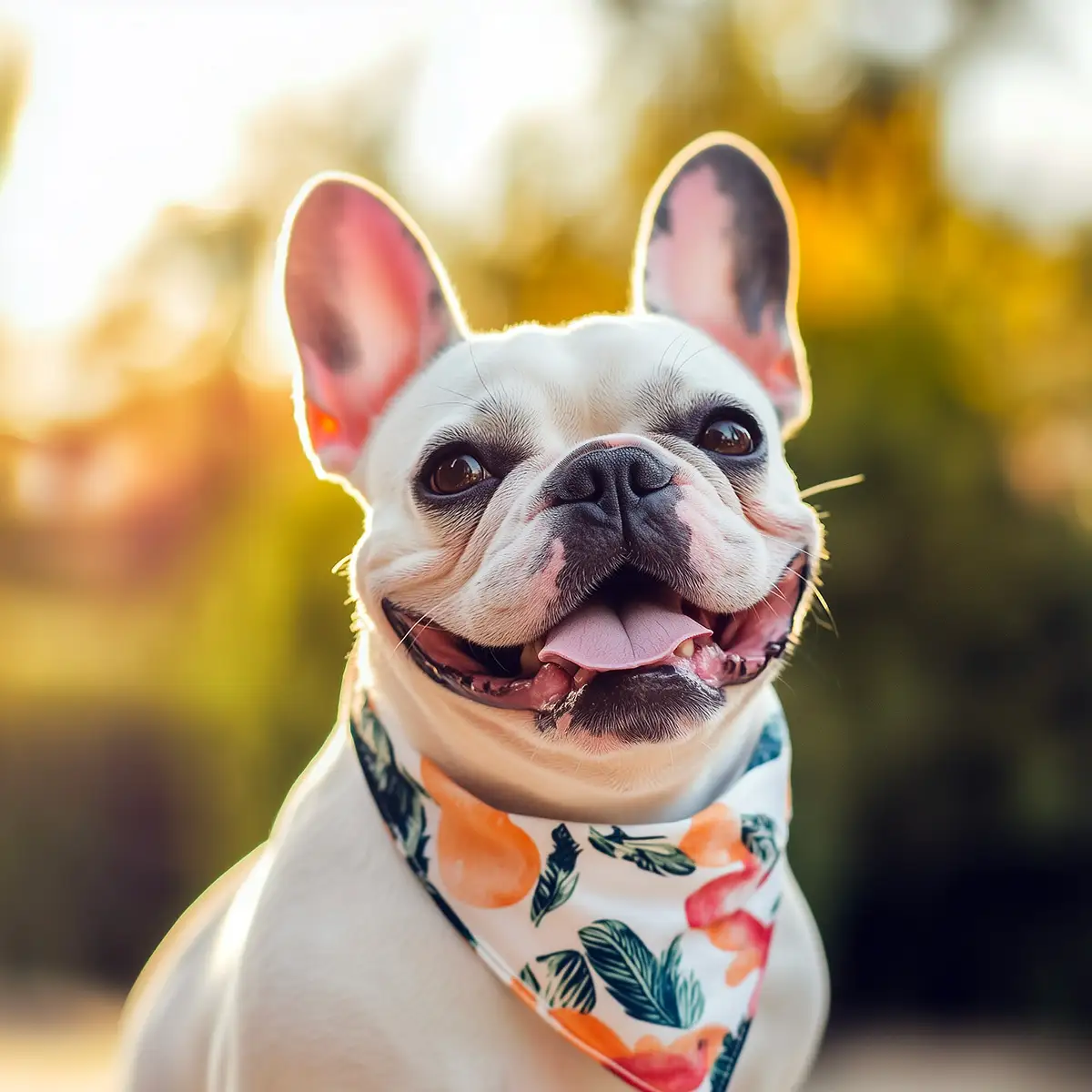Southeast Asian Village Dog Breed Info & Overview
Southeast Asian Village Dogs have roamed freely in countries like Thailand, Cambodia, and the Philippines for thousands of years, making them one of the oldest dog lineages. Known for their adaptability, these free-ranging dogs thrive in diverse environments. Experts and enthusiasts alike value them for their unique genetic heritage and remarkable resilience, which set them apart from more standardized breed types.
Characteristics
Pictures
Breed History
Long before modern canine registries existed, free-ranging dogs populated Southeast Asia’s villages, port towns, and farmland. Scientists studying ancient dog types discovered that these hardy canines share genetic links to some of the earliest domestic dogs on the planet. They’ve evolved through natural selection, adapting to tropical climates and thriving in communal settings where they scavenge and rely on human companionship.
Over centuries, travelers and traders along spice routes may have influenced these dogs’ genetic diversity, but the village dog’s essential traits remained intact. Unlike standardized purebreds, they developed as pariah dogs—built for survival, not show. Historical accounts hint that some lines might have shared ancestry with the Australian Dingo, reflecting ancient migration paths throughout Asia and beyond.
Today, the Southeast Asian Village Dog retains its free-roaming spirit and displays a rugged build. Studies published in reputable sources like ScienceDirect confirm their status as key to understanding canine domestication. While not recognized by mainstream kennel clubs, these dogs remain culturally significant, safeguarding homesteads and forging strong bonds with local communities throughout the region.
Temperament, Personality
At heart, these dogs are resourceful and independent, shaped by generations of living alongside humans without strict confinement. They often form deep attachments to a single family or community, exhibiting loyalty and an acute sense of territory. Because of their pariah dog heritage, they can be cautious around new faces, making early socialization especially beneficial.
Despite their wary instincts, they tend to be loving and protective once they trust someone. They can form robust bonds with children, although supervision is key—like with any breed. When introduced to other dogs or even cats in a calm, structured manner, many Southeast Asian Village Dogs learn to coexist peacefully, reflecting their cooperative village origins.
Their keen awareness also translates into a strong watchdog mentality. Quick to signal the presence of strangers, they may bark in warning but are not typically aggressive without cause. If you’re searching for a companion that’s both affectionate at home and alert to unusual circumstances, these village dogs offer a blend of independence and empathy that many families find irresistible.
Physical Characteristics
While not bred to a strict standard, the Southeast Asian Village Dog generally stands within the 20–28-inch range. They exhibit a lean, muscular build ideal for agility and endurance. Their ears may be pricked or semi-pricked, reflecting their ancestral links to other ancient dog types and providing them with heightened awareness of their surroundings.
Their coat can vary from short and dense to a slightly rougher texture, typically in shades of brown, black, tan, or mixed patterns. Because these dogs evolved in humid, tropical regions, their coats protect them from sun and rain yet require minimal grooming. Some individuals display distinctive markings, while others blend into the environment with natural camouflage.
Notably, the Southeast Asian Village Dog’s appearance can shift depending on local ancestry, diet, and environment. This unique diversity underscores their status as free-ranging dogs rather than a uniform purebred. Strong jaws, alert eyes, and a balanced posture reflect their capacity for both endurance and swift movement—traits that have helped them survive across varied terrains in Southeast Asia.
Health Issues
Overall, these hardy canines tend to be robust. However, they can still inherit or develop health problems like hip dysplasia, which sometimes affects medium-sized breeds. Village dogs with a history of inadequate nutrition or harsh living conditions might also be prone to skin conditions and parasites, emphasizing the importance of proper veterinary checkups.
Because they roam freely in many areas, vaccinations against rabies, distemper, and parvovirus are critical. Regular deworming and flea/tick prevention further bolster their well-being. Observing your dog’s gait, weight, and coat condition can alert you to early signs of underlying health issues, so routine checkups remain key to maintaining a healthy lifestyle.
To stay on top of potential genetic or regional conditions, consult reputable sources like the American Veterinary Medical Association for up-to-date health guidelines. Responsible pet owners ensure a balanced diet, consistent grooming, and timely interventions. By monitoring your Southeast Asian Village Dog’s overall condition, you can catch and address minor concerns before they escalate into major complications.
Grooming Needs
One of the major perks of owning this breed is their relatively low-maintenance coat. A quick weekly brush often suffices to remove dead hair and keep their skin healthy. Because their fur isn’t prone to excessive matting, standard grooming routines—like bathing every month or two—tend to work well for them, especially if they spend time outdoors.
Their nails, however, may require regular trimming, particularly if they’re not wearing them down on rough terrain. Check ears for debris or signs of infection, as their upright or semi-upright ears can trap moisture in humid climates. Beyond that, a fast toothbrushing session a few times a week helps ward off dental issues common in many medium-sized dogs.
Occasional shedding is normal, especially during seasonal changes. Keeping a simple grooming kit—brush, nail clippers, and ear-cleaning solution—on hand ensures you can address issues promptly. Should you notice an unusual amount of dandruff or hair loss, consult a veterinarian to rule out parasites or allergies. Overall, the Southeast Asian Village Dog is straightforward to groom and maintain.
Exercise Requirements
Bred (or more accurately, naturally selected) for an active outdoor life, these dogs thrive on ample daily movement. They often roam village streets or farmland for hours, so simply lounging indoors won’t fulfill their needs. Plan on one to two hours of brisk walks, hikes, or play sessions each day to keep them mentally and physically fit.
If you lack large open spaces, engaging activities like scent games or agility drills can work wonders. They enjoy exploring new terrain—sniffing out interesting scents is practically in their DNA. Be mindful, though, of extreme heat or humidity. Their bodies are used to tropical climates, but they’ll still need breaks and hydration to avoid overheating.
For owners who prefer a calmer breed, consider checking out other medium dog breeds with lower energy levels. However, if you’re an active individual or family, a Southeast Asian Village Dog can be an ideal jogging partner. Keeping them mentally stimulated through interactive puzzles, training sessions, or even supervised free-range time aligns with their innate curiosity.
Training Tips
Training a Southeast Asian Village Dog calls for patience, consistency, and positive reinforcement. These dogs are naturally intelligent but can be independent thinkers due to generations of self-reliance. Harsh methods or punishment-based techniques can backfire, so reward-based systems with treats or praise often yield better, longer-lasting results.
Early socialization is essential. Exposing puppies to various people, animals, and environments helps them grow into confident adults. Group obedience classes, short neighborhood walks, and gentle introductions to other friendly dogs can all shape a well-rounded companion that’s comfortable in diverse settings. Focus on building trust and mutual respect.
Because they’re free-ranging by nature, recall might be one of your biggest training challenges. Use high-value treats to reinforce coming when called, especially during the early phases. Gradually increase distractions so your dog learns to obey in more complex situations. The end goal is a dog that respects boundaries yet retains the spirited nature that makes this breed so appealing.
Nutrition, Diet
Unlike many standard breeds, these free-ranging dogs historically survived on scraps, rice, vegetables, and whatever proteins were locally available. To replicate that balanced yet diverse diet at home, consider a mix of lean meats (like chicken, fish, or pork), some fibrous vegetables, and easily digestible grains. Aim for roughly 50% protein, 20–30% carbs, and 20–30% fats.
Adult Southeast Asian Village Dogs typically weigh between 50–75 pounds (23–34 kg), so adjust meal sizes accordingly. An active adult might consume around 2.5–3 cups of high-quality kibble per day, split into two meals. If you’re feeding fresh or homemade food, match the calorie content and portion size to maintain a healthy weight, factoring in your dog’s daily exercise routine.
Seek foods enriched with vitamins that support joint health and a strong immune system, such as omega-3 fatty acids and glucosamine. Look for brands or recipes specifically formulated for medium- to large-breed dogs with moderate to high energy levels. Always provide clean water, especially in hot, humid environments. Periodic checkups help you fine-tune their diet based on individual needs.
Adoption, Breeders
When searching for a Southeast Asian Village Dog, formal breeders may be rare, given the breed’s free-ranging status. Instead, focus on reputable rescue organizations or shelters that collaborate with local communities. These groups often ensure vaccinations and spay/neuter services before adoption, giving you a healthy start with your new dog.
Websites like the Soi Dog Foundation highlight rescue efforts for street dogs in Thailand, while groups in the Philippines assist Aspins in need of homes. Adoption fees typically fund vaccinations, medical care, and outreach programs, making it a responsible and cost-effective path. Plus, you’ll enjoy the reward of providing a second chance to a dog who truly deserves it.
If you choose to buy from a local breeder—particularly in rural parts of Southeast Asia—ensure they prioritize the dog’s well-being. Look for clean environments, transparent vet records, and a willingness to answer questions about the breed’s background. Even though these dogs aren’t “officially recognized,” ethical breeding practices still matter. A mindful approach guarantees a happier, healthier Southeast Asian Village Dog.
Family Pet?
Their adaptability makes them suitable for family life, especially in households that appreciate an energetic, independent-minded companion. These dogs often behave gently around children once trust is established, though they can be a bit protective. Teaching kids to approach the dog calmly and respectfully helps build positive interactions that last a lifetime.
Because they possess strong survival instincts, they may act reserved at first when meeting new family members or guests. With patience, they typically warm up and show their affectionate side, even forming close bonds with other pets if introduced properly. Early exposure to cats or smaller animals can reduce the risk of prey-driven behavior down the road.
The Southeast Asian Village Dog’s minimal grooming needs and moderate shedding can be a relief for busy families. They still need ample exercise, so if you have a fenced yard or nearby open spaces, you’ll find them exploring every corner. Many owners find that the dog’s combination of loyalty, alertness, and playfulness makes for a well-rounded addition to family life.
Right For You?
People drawn to unique, ancient dog types are often fascinated by this breed’s history and primal instincts. However, they thrive best with owners who value outdoor adventures, mental stimulation, and a less “cookie-cutter” canine experience. If you’re set on a meticulously standardized dog, check out rare dog breeds recognized by formal clubs.
Those willing to invest time in proper socialization and training will find the payoff enormous. A well-adjusted Southeast Asian Village Dog can be a loyal guardian, an inquisitive friend, and a spirited playmate. If you live in an apartment, prepare to dedicate daily outings for exercise and mental challenges. Ultimately, the breed’s versatility suits active lifestyles and open-minded households.
For individuals seeking a low-maintenance, couch-loving companion, these free-ranging dogs might not be the best match. Their centuries-old link to pariah dogs means they flourish when they can explore and remain mentally engaged. If that sounds like your style, then you’ll likely appreciate the adaptability, character, and cultural significance that this breed carries into every home.
Conclusion
In essence, the Southeast Asian Village Dog offers an extraordinary glimpse into one of the oldest canine lineages on Earth. Independent, alert, and remarkably resilient, they can be a perfect fit for owners who respect their unique heritage and need for moderate to high activity. If you’re ready to provide the socialization, exercise, and balanced diet they require, you’ll gain a loyal companion that connects you to a living piece of history.
FAQs
-
How are Southeast Asian Village Dogs different from modern dog breeds?
Southeast Asian Village Dogs are landrace dogs, not standardized breeds. They evolved naturally alongside humans in rural villages, making them genetically diverse, highly adaptable, and behaviorally distinct from dogs bred for specific appearances or purposes.
-
Do Southeast Asian Village Dogs have a strong survival instinct?
Yes, Southeast Asian Village Dogs rely heavily on a strong survival instinct. Living semi-independently near human settlements, they excel at finding food, avoiding danger, and navigating local environments without formal training or consistent human care.
-
Are Southeast Asian Village Dogs genetically related to ancient dogs?
Recent DNA studies show that Southeast Asian Village Dogs share ancestral links with some of the world’s oldest domestic dogs. Their genetic makeup reflects thousands of years of evolution with minimal interference from selective breeding.
-
Why are Southeast Asian Village Dogs often semi-feral?
Most Southeast Asian Village Dogs live in free-roaming, semi-feral conditions, depending on a blend of scavenging, hunting, and human generosity. This lifestyle fosters independence, making them alert, cautious, and highly self-sufficient compared to Western pet breeds.
-
Do Southeast Asian Village Dogs vary by region?
Yes, the appearance and behavior of Southeast Asian Village Dogs can vary significantly between regions. Local environments, food sources, and human interactions shape their physical traits and temperament, making them a diverse group rather than a uniform breed.
Breed Ratings
The Southeast Asian Village Dog is quick-witted and adapts to various environments, though occasional stubbornness can appear.
They enjoy play, but their independent streak means they may not be as eager to engage in constant games.
A moderately high-energy dog needing daily physical and mental stimulation to stay content.
Their short-to-medium coat sheds a fair amount seasonally but is easy to maintain.
Historically, they scavenged for food, so they might chase smaller animals if not socialized early.
Weekly brushing and occasional bathing are typically sufficient for this breed’s simple coat.
They learn quickly with consistent, positive reinforcement, but may show independence.
Prolonged isolation can lead to boredom or anxiety; they prefer human or canine company.
Generally alert and vocal when noticing strangers, but not prone to excessive barking.
Minimal drooling, thanks to their lean facial structure and moderate jowls.
Often compatible with other dogs, especially if socialized early, but can be territorial.
Typically robust, yet still benefits from regular checkups and preventive care.













